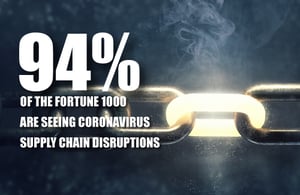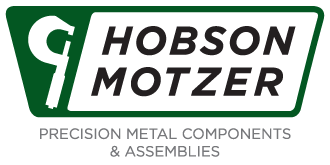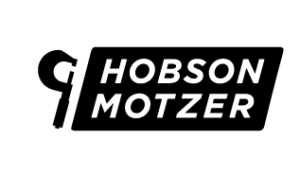Averting Risk for Medical Device Components Made in the USA
From a sourcing perspective, an offshore supply chain does present certain risks. Presently, none more than the potential impact of the coronavirus. COVID-19 is just the latest in a string of events in recent memory that have wreaked havoc on many supply chains of goods coming into the U.S.—from natural disasters, tariffs, and trade wars, to the virus rapidly moving toward global pandemic status. COVID-19 has the potential to cripple commerce as we know it. FORTUNE reports that 94% of the Fortune 1000 are seeing coronavirus supply chain disruptions.
In a Forbes article, we are reminded by Bosch CEO Volkmar Denner, that “ … all supply chains seem vulnerable because so many Chinese supply chains within supply chains within supply chains rely on each other for parts and raw materials.” The article goes on to say that falling demand may come into play as the possible pandemic grows, but the most imminent threat to the global economy is supply chain interruption.
LOOKING TO RESHORE? CLICK HERE AND WE'LL DO THE MATH WITH YOU!
When we look a little deeper, as a Harvard Business Review (HBR) article explores, we see that it isn’t just factories in China that are on hold. Production lines in other countries are at a standstill, waiting for parts from China. The article makes the point that China “has more than doubled its share of [global] trade” since the SARS epidemic (China’s GDP then was 4.31% and is currently 16% of the world GDP), so the economic fallout promises to be wider and worse. The HBR authors think we’ll begin to feel the impact mid-March, and it will continue for months. (It’s a good guess that many unforeseen reverberations will last well beyond that.)
Risk Exposure and Supply Chain Disruption
In today’s world, leading companies operate at a higher level with lean, efficient, supply chain systems that have very little waste in them. More—better—information is available: in real time, strong communication, RFID tracking shipments, the works. It takes a tremendous effort to manage these sophisticated supply chains on both sides. Risk assessment is, of course, considered in evaluating sourcing decisions, but inevitably, problems do come up—case in point. These systems have evolved over time because the upside to offshoring was there; the math made sense. But does it still?
The HBR article sums it up well:
Equally important, mounting pressure to reduce supply chain costs motivated companies to pursue strategies such as lean manufacturing, offshoring, and outsourcing. Such cost-cutting measures mean that when there is a supply-chain disruption, manufacturing will stop quickly because of a lack of parts. The vast majority of global companies have no idea of what their risk exposure to what is going on in Asia actually is; that’s because few, if any, have complete knowledge of the locations of all the companies that provide parts to their direct suppliers.
“Low-Cost” Production: Does the Math Still Work?
Will this latest threat prompt companies to re-evaluate their cost models and make a case for reshoring critical products here in the U.S.? In the sourcing of goods, a typical measure is TCO (total cost of ownership). Is it time to factor in TCI (total cost of interruption)? Okay, so we have a possible pandemic on our hands. Who could have predicted it? But when you take any interruption in supply into account and the massive financial impact it has, plus impact of service level to customers, and so on … does the math still work?
DOES THE MATH STILL WORK? LET'S LOOK AT IT TOGETHER--CLICK HERE TO FIND OUT!
Reshoring Is Reassuring
As an American manufacturing company, there will always be some bias in our position. We want to make things here at home. But there is a strong argument to be made for the math these days. There has been a growing trend toward reshoring over the past few years. In the medical device space, where we operate for precision metal components and assemblies, the technology and efficiency of a world-class, advanced manufacturer like Hobson & Motzer stands tall against a lot of low-cost countries when you look at the whole picture.
Aside from the economic considerations, an equally alarming thought is this: what among the millions of products caught in stalled supply chains are products that the U.S. companies will need to combat and treat COVID-19 as it begins to scale up in the U.S.? The CDC has officially warned us this week that it is not a matter of if, but when it will impact the United States. In circumstances like this, or even a natural disaster, or any situation with such unpredictable and far-reaching impact, having the manufacturing supply within our 3,000 miles is a pretty good idea.
Vertically Integrated U.S. Manufacturing for Medical Device Parts and Components
Hobson & Motzer is an American manufacturing company servicing advanced industries, specializing in quality-critical precision medical device components and parts, since 1912. We are a vertically integrated manufacturer of precision metal components and assemblies and excel at precision metal stamping, coining, and CNC machining, as well as precision electro-chemical machining (PECM). Let's look at the math together; we think you'll be pleasantly surprised. Find out how we can become your reliable supply chain partner and make all your projects a success.
Reshoring: does the math still work? Fill out the form below, and we’ll show you!









